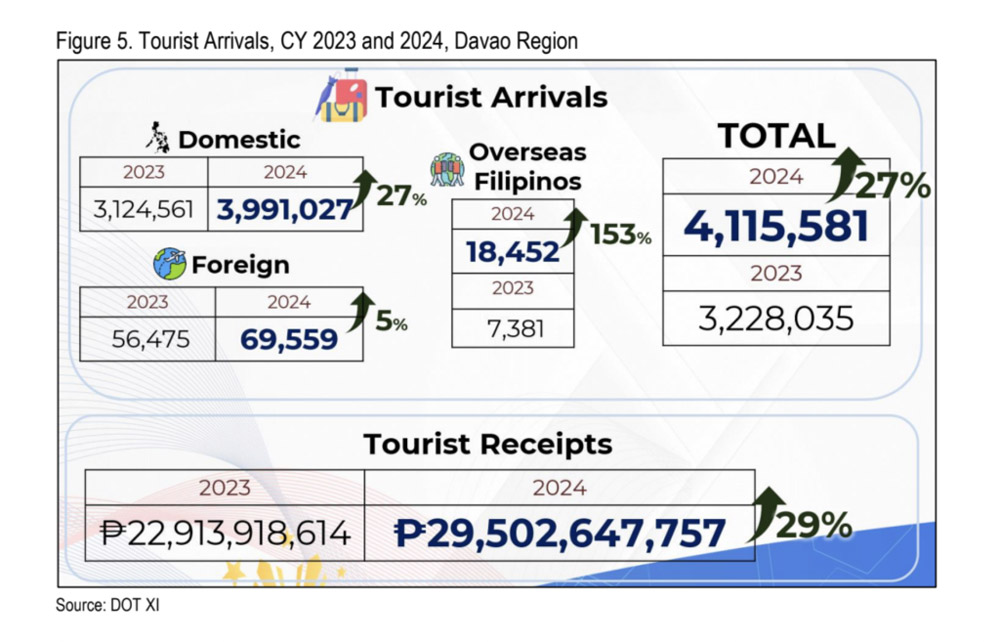DAVAO CITY — Davao Region has demonstrated a robust economic performance in 2024, bouncing back from previous challenges and setting the stage for further growth in 2025, according to the newly released Annual Regional Economic Situationer (ARES) report by the Department of Economy, Planning, and Development (DEPDev), formerly NEDA.

A key highlight of the report is the significant decrease in the average inflation rate. Dropping from 6.3% in 2023 to a more manageable 4.0% in 2024, the region has successfully met its target range of 2-4%. This stability is attributed to a downtrend in monthly inflation rates since mid-year, mirroring the stabilizing national environment and decreased prices across most major commodity groups. Notably, alcoholic beverages, tobacco, housing, water, electricity, gas, and other fuels experienced substantial price deceleration.
The labor market also showed strength, with an employment rate of 96.9% in July 2024, surpassing the national average. This translates to over 2.3 million individuals gainfully employed, a significant increase from the previous year. The unemployment rate fell to 3.1%, indicating a thriving job market.
Investment figures are particularly encouraging. Registered investments soared to PHP 27.13 billion in 2024, significantly higher than the PHP 7.54 billion in 2023, and exceeding targets set in the Davao Regional Development Plan for the second consecutive year. These investments, primarily in mining and quarrying, manufacturing, and real estate, have generated over 2,000 jobs.
Tourism experienced a notable boom, with 4.1 million tourist arrivals in 2024, a 27.5% increase. Tourist receipts reached PHP 29.5 billion, marking a 29% rise. This growth is attributed to the development of tourism circuits, particularly MICE tourism, and the establishment of new international and domestic routes.
However, challenges remain. The agriculture sector faced setbacks due to natural and biological hazards, affecting the production of crops like banana and cacao. Health indicators revealed increases in stunting among children and under-5 mortality rates. Basic education enrollment rates for kindergarten, elementary, and junior high school fell below targets, though Senior High School enrollment surpassed expectations.
Looking ahead to 2025, NEDA forecasts continued moderate inflation and anticipates economic stimulus from midterm election spending. The region aims to strengthen Micro, Small, and Medium Enterprises (MSMEs) through innovation and digitalization. Major infrastructure projects, including the Mindanao Railway Project and the Samal Island-Davao Connector, are expected to progress, further bolstering economic development and connectivity.
Despite some hurdles, Davao Region’s 2024 performance underscores its economic resilience and commitment to growth, setting a promising trajectory for 2025. (Rene Carbayas)



